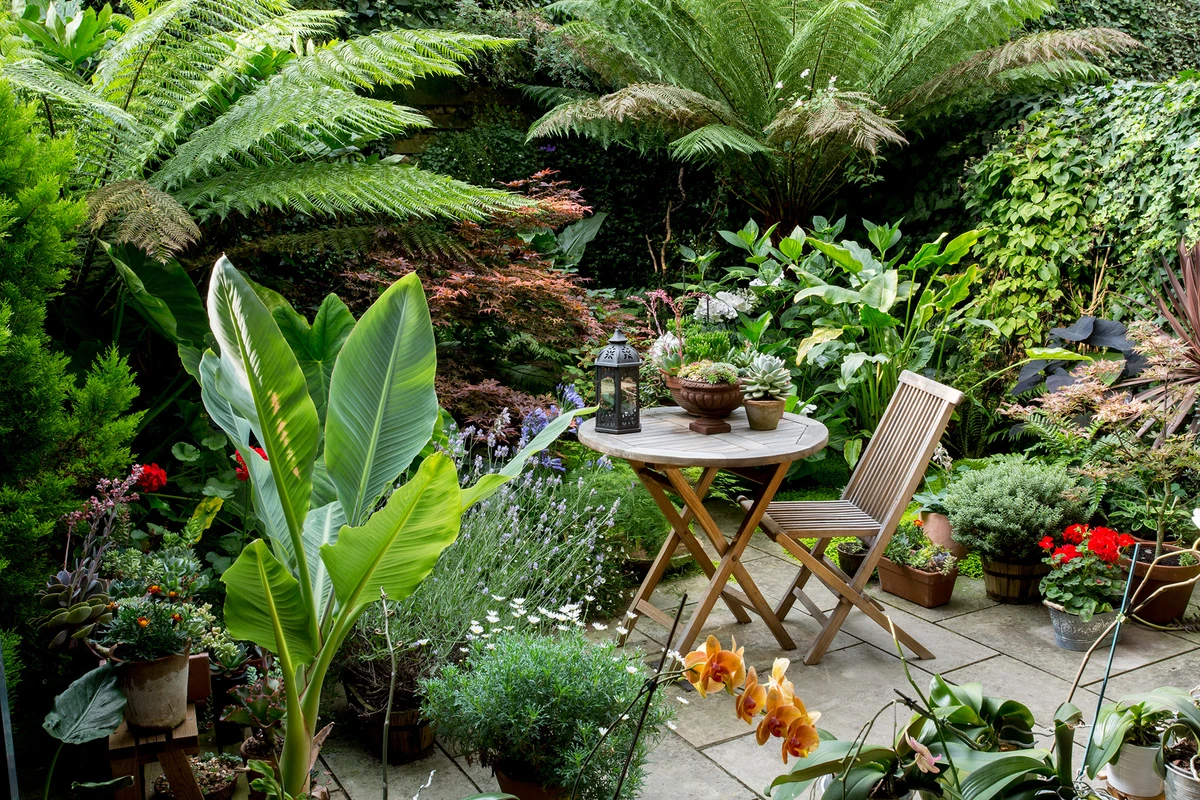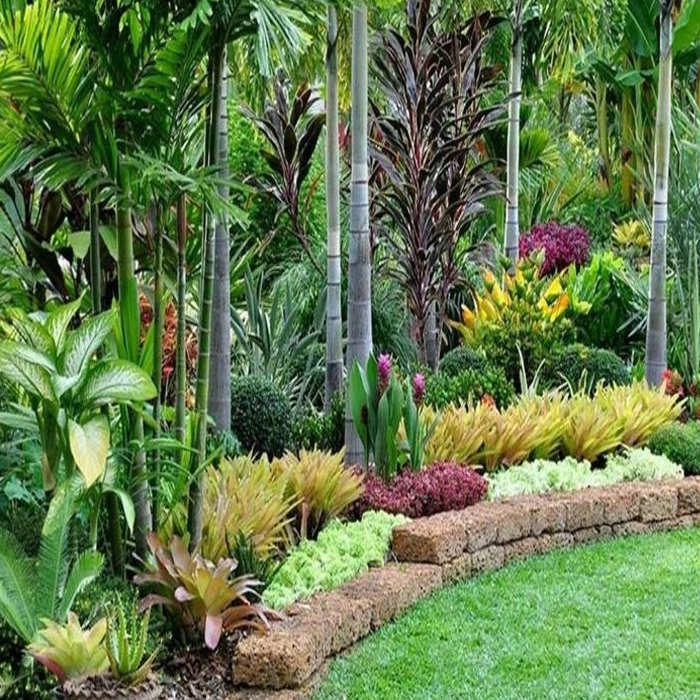A home garden with a Mediterranean theme is the perfect choice for those who want to create a relaxing, exotic and colorful atmosphere in their yard. The style of this garden is inspired by the area around the Mediterranean Sea, including Spain, Italy, Greece and Türkiye. With a combination of natural elements such as stone, water, and a variety of heat-resistant plants, Mediterranean gardens offer an aesthetic that is both calming and inviting.

Mediterranean gardens are known for their use of natural materials that create a classic and elegant look. Plants such as lavender, rosemary and olive trees, which tolerate hot and dry conditions, are top choices for this garden. Additionally, water elements such as small ponds or fountains add calming sounds and atmosphere. Bright colors such as blue, white, and yellow are often used in garden furniture and plant pots, giving a cheerful and refreshing feel. With the right arrangement, a Mediterranean garden not only beautifies your home, but also creates the perfect place for relaxation.
What is a Mediterranean Garden?
A Mediterranean garden is a garden designed with aesthetics and elements typical of the Mediterranean region. This style is known for its use of natural materials, bright colors, and heat-tolerant plants. Mediterranean gardens often reflect a relaxed and warm atmosphere, with a focus on comfort and natural beauty.
One of the characteristics of a Mediterranean-style garden is the use of natural stone and brick as the main material, both for pavement, fence walls and other decorative features. Bright colors such as yellow, red, blue and orange are often applied to garden elements such as plant pots, garden chairs and ornaments. Not only that, choosing Mediterranean plants that are resistant to hot and dry weather such as olives, lavender, rosemary and sunflowers is also an important element in creating a typical Mediterranean atmosphere.
Main Characteristics of the Mediterranean Garden
Some of the main characteristics of a Mediterranean garden include:
- Heat Resistant Plants: These gardens are usually filled with plants that can survive hot and dry climates, such as lavender, rosemary, and olive trees.
- Stones and Pebbles: The use of stones, pebbles and terracotta paving are important elements to create a distinctly Mediterranean look.
- Water: A small pond or fountain is often the center of attention in a Mediterranean garden, providing a calming sound and atmosphere.
- Bright Colors: Bright colors such as blue, white, and yellow are often used in garden furniture and plant pots.
Steps to Create a Mediterranean Garden at Home
1. Planning and Design
Perencanaan adalah langkah pertama dan paling penting dalam menciptakan taman Mediterania. Anda harus mempertimbangkan ukuran dan bentuk lahan, iklim setempat, serta gaya arsitektur rumah Anda. Gambar sketsa atau gunakan perangkat lunak desain taman untuk membantu visualisasi.
2. Choose the Right Plants
Plant selection is key in creating a Mediterranean garden. Plants frequently used in Mediterranean gardens include:
- Lavender: This plant is not only beautiful with its purple flowers, but also provides a calming aroma.
- Rosemary: Apart from being used as a kitchen spice, rosemary is also very resistant to dry conditions.
- Olive Tree: A perfect Mediterranean icon, this tree provides a classic and elegant look.
- Bougainvillea: This vine adds beautiful bright color to your garden.
3. Build Garden Structures
Mediterranean garden structures typically involve the use of lots of stones and gravel. You can make a path from terracotta stone or gravel to give a natural feel. Stone walls or low fences can also add a traditional element.
4. Water Element
Water elements, such as small ponds or fountains, are important components in Mediterranean gardens. The sound of flowing water can create a peaceful and calming atmosphere. Make sure these water elements are managed properly to prevent algae growth and keep the water clean.
5. Furniture and Decoration
Choose garden furniture that is comfortable and weather-resistant. Wooden chairs, wrought iron tables, and umbrellas in bright colors can add comfort and aesthetics to the garden. Decorations such as small statues, lanterns and terracotta pots can also be used to add visual interest.
Mediterranean Garden Care Tips
care is relatively easy, but there are several things you need to pay attention to to keep the garden beautiful and healthy.
- Watering: Mediterranean plants are usually drought tolerant, but still require regular watering, especially when newly planted. Use a drip irrigation system for watering efficiency.
- Pruning: Regular pruning is necessary to maintain the shape of the plant and prevent excessive growth. Lavender and rosemary, for example, need to be pruned regularly to keep them tidy.
- Fertilizing: Although Mediterranean plants don’t need a lot of fertilizer, applying organic fertilizer once or twice a year can help keep the soil and plants healthy.
- Pest Control: Natural pest control is the best option. Use organic pesticides or take advantage of natural predators to maintain the balance of the garden ecosystem.
Mediterranean Garden Design Inspiration
To provide a clearer picture, here are some Mediterranean garden design inspirations that you can apply:
1. Small Garden with Terracotta Pots
If you have limited space, using large terracotta pots is an ideal solution for growing a variety of Mediterranean plants. Terracotta pots are not only functional but also add a natural, Mediterranean aesthetic. Arrange these pots strategically around the garden to create an attractive and harmonious display.
2. Rocky Footpath
Create stone or gravel paths that connect different areas of your garden to create a natural path that is not only practical but also aesthetic. This arrangement of stones or gravel gives a distinctive rustic appearance and is harmonious with other natural elements in the garden.
Along the path, add some lavender bushes that will not only beautify the path with their beautiful purple flowers but also spread a calming aroma every time you walk along it. Fragrant lavender will add a relaxing and refreshing atmosphere to the garden, making every step a calming and enjoyable experience.
3. Relaxation Corner with Wooden Chairs
To create the perfect relaxation corner in your Mediterranean garden, start by placing comfortable wooden chairs that invite to sit and relax. Choose a chair with an ergonomic design that supports your body well, and add brightly colored pillows for an extra touch of comfort. Pair this chair with a large, brightly colored umbrella that not only protects from the sun, but also adds an interesting visual element to your garden.
4. Small Pond or Fountain
Place a small pond or fountain in the middle of the garden as a focal point to create an attractive and calming center of attention. This pool or fountain not only serves as a beautiful visual element, but also as a source of pleasant natural sounds.
5. Vines on the Pergola
Build a pergola in one corner of the garden to create a shady and comfortable space, and add an interesting architectural element. Choose vines such as bougainvillea or grapes to decorate the pergola, giving it a natural feel and beautiful colors. Bougainvillea with its bright flowers will provide an exotic and vibrant touch, while grapes can provide dense green foliage and, with luck, fruit to enjoy.



